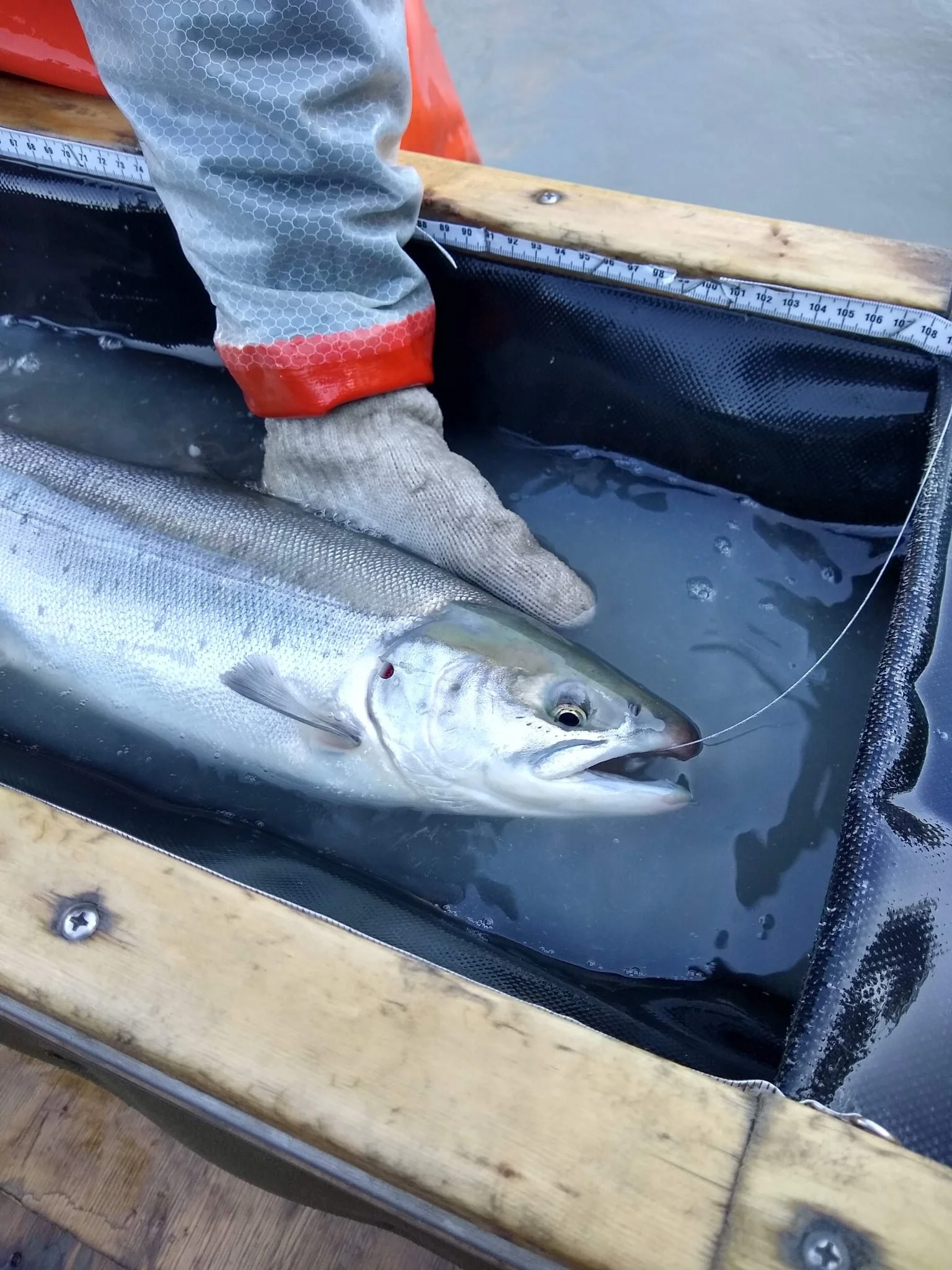How Skinny are Skinny Fish?
A technician uses a handheld microwave sensor to measure the fat content of a sockeye salmon. Photo courtesy of Peter Rand.
By Allison Sayer
Anyone who has been fishing in the Copper Basin for a long time can tell you the same thing: There are fewer fish, and many of the fish are smaller. Not only are the fish shorter in length, but they could be described as “skinny.”
Dr. Peter Rand, a research ecologist for the Prince William Sound Science Center, and UAF professor Dr. Kristen Gorman, set out to learn more about the condition of sockeye salmon in the Copper River, and how the fish condition impacted their migration success. I spoke with Rand about the research last year.
In 2019, 2020, and 2021, the team captured sockeye salmon entering the Copper River, took a tissue sample to be analyzed for disease, and measured the size and fat content of the fish. The fish were then radio-tagged. This allowed them to recapture fish that made it to their spawning sites, or to determine where fish died if they did not make it that far. About 300 fish were tagged each year.
The early summer of 2019 was marked by high temperatures. The temperature of the Copper River did not increase, but increased glacier melt created periods of high flow levels. As one might assume, Wood Canyon was particularly tough for salmon at that time. Although many large and small fish died before getting up the canyon, the ones that did make it up were the largest ones. The slimmer fish did not have the energy reserves to either push through higher flow rates or wait for a lower flow.
A sockeye salmon with a radio-tag. Photo courtesy of Peter Rand.
As the summer of 2019 continued, conditions improved. More fish did make it to their final destination. Flow rates in 2020 and 2021 were more benign. During these years, success in reaching the spawning grounds was not as dependent on size.
Rand said, “2019 gives us a glimpse of the future. If we get more of these heat waves in Alaska, it’s going to be tough.”
“Skinny” fish provide less food for the person who catches them, but they are also closer to their own physiological limits. Fish need fat reserves to swim upstream. Many of the fish that successfully reached the spawning grounds and were measured by Rand’s team had a fat content of only around 1%. This means that if they were either a little skinnier when they started, or encountered more difficulty along the way, they probably would not have made it to where they were going.
Currently, fish destined for the highest reaches of the river are weighing in at 14-16% fat, while those headed to lower spawning grounds have 5-10% fat. The National Park Service will fund a continuation of this research, which will hopefully make it possible to determine whether the fat content of arriving fish is going up, down, or staying the same.
Why are fish returning skinny? A warming ocean, The Blob or activities from other fisheries could all be part of the problem.
Dr. Rand will give a virtual presentation on February 4 as part of the WISE science lecture series with updates on the research. See WISE-edu.org for more information.
Rand and Gorman’s research has received funding from The North Pacific Research Board and the Alaska Sustainable Salmon Fund. Collaboration and cooperation has also been provided by the Alaska Department of Fish and Game, the National Park Service, the Gulkana Hatchery (run by the Prince William Sound Aquaculture Corporation), Ahtna Intertribal Resource Commission, and private citizens/landowners.


